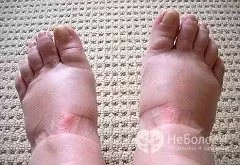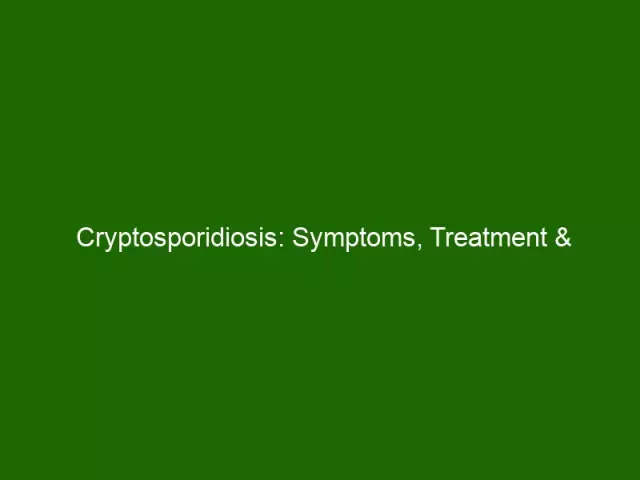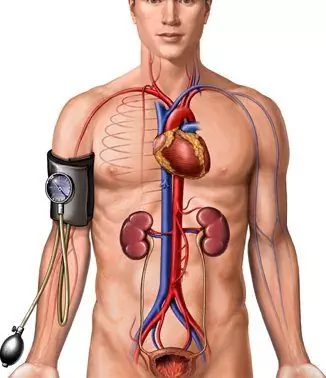- Author Rachel Wainwright [email protected].
- Public 2023-12-15 07:39.
- Last modified 2025-11-02 20:14.
Toxicosis

The new life, which has arisen in the depths of the mother's body, is not only joy and expectation, but also a foreign body alien to the female body that secretes harmful substances. When they enter the bloodstream, they penetrate into all organs and provoke signs of intoxication. This condition in pregnant women is called toxicosis.
The predisposition to toxicosis during pregnancy is inherited from mother to daughter, and hormones are its true "culprits". By timing, toxicosis can be divided into early and late. Toxicosis of the second half of pregnancy is also called gestosis.
Early toxicosis
Early toxicosis during pregnancy develops in the first 3-6 months after conception. During the first weeks, the hormonal background remains unchanged, so the woman does not experience discomfort. But the growth of the embryo leads to endocrine restructuring in the body, and the pregnant woman begins to experience all the "delights" of toxicosis. She complains of decreased appetite, changes in taste, salivation, nausea and vomiting.
Gradually, the hormonal background stabilizes, and all unpleasant symptoms disappear. If the timing of early toxicosis is delayed, then in most cases this indicates that the woman has problems with internal organs, in particular the kidneys. In the future, such a condition can not only lead to premature birth, but also create a life-threatening situation for the mother and child.
According to the frequency of vomiting, the most characteristic sign of early toxicosis during pregnancy, three degrees are distinguished:
- easy. The woman's condition practically does not suffer. She has short-term morning sickness on an empty stomach. Vomiting can be one to five times a day.
- average. In this case, vomiting can occur up to 10 times a day. The condition of a pregnant woman worsens, signs of dehydration appear: pulse quickens, dry skin appears, and blood pressure decreases.
- heavy. A woman is worried about excessive vomiting, the frequency of which increases to 20-25 times a day. There is a sharp deterioration in the condition, the symptoms of dehydration increase, the body temperature rises to subfebrile numbers, and the weight decreases. Even the slightest physical activity can provoke vomiting in a severe stage of early toxicosis.
The most common are the first and second degrees of toxicosis. As a rule, they do not cause much damage to a woman's health, and after 12 weeks all signs of early toxicosis gradually fade away.
Late toxicosis or gestosis
Late toxicosis in terms of timing differs from early, its time comes after 20 weeks of pregnancy, and it disappears only after childbirth.
Gestosis is dangerous because this disease disrupts the normal functioning of all organs and systems.
Toxicosis after 20 weeks begins gradually, there may not be any external manifestations with it, so a woman does not realize for a long time that some health problems have arisen. Gestosis during pregnancy is much less common, but the consequences from it can be much more dangerous.
This disease is a triad of symptoms: edema, increased blood pressure and protein in the urine. It is still not known exactly what is the trigger for the development of this formidable complication of pregnancy. Among the factors provoking toxicosis, experts call stressful situations, a burdened obstetric history, the age of a pregnant woman, a short break between childbirth, excessive stretching of the uterus due to polyhydramnios or a large fetus. But most often, gestosis during pregnancy develops against the background of chronic diseases.
In cases where toxicosis develops in a previously healthy woman, they speak of "pure" gestosis. If there are any deviations in health, for example, metabolic disorders, hypertension, liver or kidney disease, against the background of which toxicosis appears, then they speak of "combined" gestosis.
Depending on the symptoms of the disease and the form of manifestations, four degrees of severity of gestosis are distinguished:

- edema of pregnant women, which appear at the very beginning of the development of gestosis. This is due to violations of the water-salt balance. The vascular walls become more permeable, and fluid enters the tissues without hindrance. At first, the puffiness is invisible to a prying eye, then it becomes obvious. The woman has a pathological weight gain; protein can be found in the urine.
- high blood pressure. With late toxicosis against the background of edema, the kidneys cease to function normally, therefore nephropathy develops and, as a result, blood pressure rises. This causes the blood to thicken, which can lead to blood clots.
- preeclampsia. This stage of gestosis is characterized by high blood pressure, protein in the urine and edema. Puffiness extends not only to the arms, legs or face, but also to the placenta with the brain. As a result, the child lacks oxygen, and the woman develops signs of impaired blood supply to the central nervous system, such as nausea, vomiting, a sharp headache, "flies" before the eyes, and vision problems.
- eclampsia. The woman's condition deteriorates sharply, the developed seizure attack is accompanied by loss of consciousness. With gestosis of this severity, the risk of placental abruption, premature birth and fetal hypoxia increases. Death is possible both from the mother's side due to cerebral hemorrhage, acute disorders of the functions of organs and systems, and from the infant.
Treatment of early and late toxicosis
Treatment for early toxicosis is reduced to adherence to a healthy lifestyle, good nutrition and a reasonable alternation of work and rest. Moderate to severe vomiting may require hospitalization. The treatment is complex, with the manifestations of early toxicosis during pregnancy, antihistamines, drugs that normalize the work of the internal secretion organs, and drugs that affect the central nervous system successfully cope. Termination of pregnancy with early toxicosis is indicated only when a woman's life is threatened.
It is impossible to get rid of gestosis, but it is quite possible to reduce the risk of severe complications. With mild degrees of late toxicosis, treatment can be obtained at home, in other cases, a hospital stay is required. Treatment is symptomatic, antihypertensive and other drugs are used. In case of ineffectiveness of treatment, pregnancy is terminated in the interests of saving life.
Prevention of toxicosis

The manifestations of early toxicosis can be significantly mitigated if you follow a number of simple rules:
- in the morning, without getting out of bed, eat a couple of crackers, a few pieces of dried fruit or drink some unsweetened tea.
- eat fractionally, in small portions. Food should be digestible, low-fat and not spicy.
To prevent the development of gestosis during pregnancy, it is necessary to observe the drinking regime, lead a healthy lifestyle and eat healthy food.
In case of any ailments, you should consult your doctor and strictly follow the recommendations given to them.
YouTube video related to the article:
The information is generalized and provided for informational purposes only. At the first sign of illness, see your doctor. Self-medication is hazardous to health!






